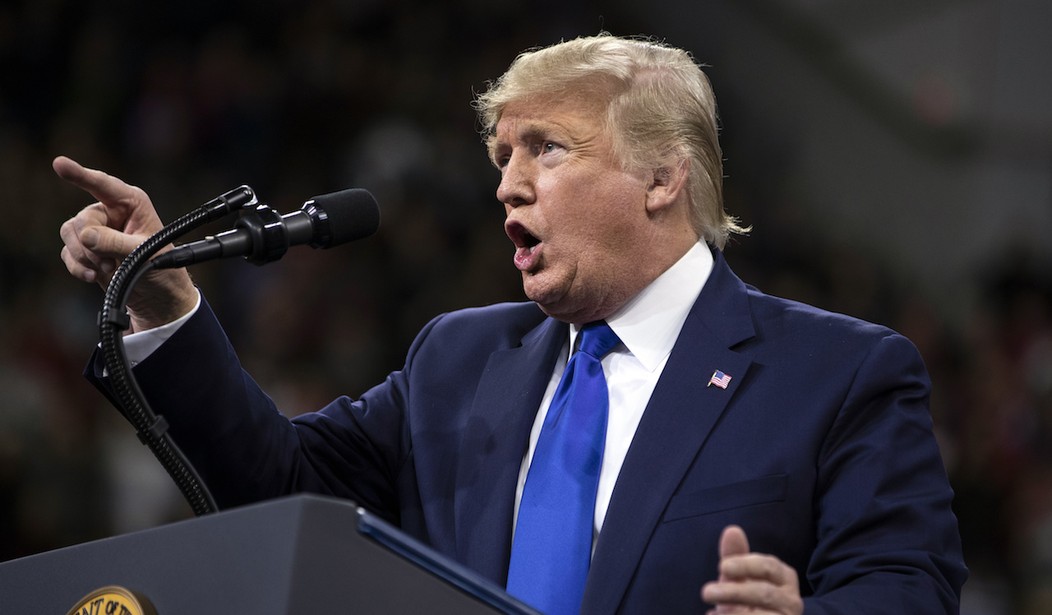Since assuming office, President Trump has maintained a sharp focus on reducing Washington’s bloated bureaucracy, fighting stifling regulations, and cutting the red tape that stifles America’s economic progress. His new plan to overhaul the complex National Environmental Policy Act (NEPA) is a cornerstone of those efforts. That’s because NEPA has become the epitome of government inefficiency, creating what the President rightly calls a “regulatory nightmare.” Many expect the president to provide sharper detail in Tuesday’s State of the Union Address.
Enacted into law in 1970 to help fight pollution, NEPA requires federal agencies to consider the environmental impact of projects before approving or rejecting permits. Infrastructure projects also undergo an assessment of possible social and economic impacts. Important and reasonable goals, but in the 50 years since they were enacted, these guidelines have evolved into a process that bears little resemblance to that Congressional intent.
Today, the average length of a NEPA review is four and a half years, often followed by lengthy and expensive litigation. The average cost to complete a review is now $4.2 million and the average environmental impact statement fills 600 pages. These endless delays, high costs and overly dense documents are an almost insurmountable deterrent to the capital investments needed to repair and modernize infrastructure – at a time when America’s roads, bridges, airports, harbors and other public works are crumbling. We need new projects to provide for a growing population and economic expansion, as well as maintaining existing facilities.
The Administration, for example, has pointed to Bayonne Bridge, a critical thruway connecting New York and New Jersey, which took more than ten years to complete because of NEPA. Similarly, the Seattle-Tacoma International Airport, the busiest airport in the Pacific Northwest, endured fifteen years of environmental reviews and just four years of actual construction. Even renewable energy projects get caught up in the red tape, such as Spring Valley Wind Farm, a Nevada project that took seven years of NEPA reviews to become reality.
Recommended
These projects aren’t the only victims of NEPA, of course. Industry sectors such as agriculture, forestry, manufacturing, and transportation – including maritime ports – have wrestled with the heavy requirements of NEPA as they attempt to expand and modernize. America’s aging infrastructure is one of the greatest obstacles challenging the nation, and both the President and Congressional leaders call it a top priority. But the regulatory permitting process under NEPA is a roadblock, hindering these critical investments in the future. Something must be done.
But things are looking up. The president’s plan is as simple as it is necessary. For starters, it restricts the timeframes for these reviews. Environmental impact statements would be limited to a very reasonable two years, and environmental assessments to just one year. It also designates just one agency to take the lead on permitting, and requires agencies to work together to resolve disputes that often cause major delays. Finally, the proposal creates a streamlined process for stakeholders to be heard. As the president explained in plain language, “We're going to have very strong regulation, but it's going to go very quickly.
American businesses are enthusiastically welcoming such desperately needed change. NEPA is preventing critical infrastructure improvements while the nation’s major public works continue to deteriorate. NEPA was created with the best of intentions, and worked well for a time, but has become unwieldy. America’s reasonable attempt to protect the environment has instead become an easy weapon for political agendas. After five decades, NEPA itself needs to be upgraded and modernized, just as much as the infrastructure projects it is blocking.
President Trump recognized this on his campaign trail, making a number of strong promises to the American people to help our country’s infrastructure. Even in his first days in office he issued an Executive Order calling for the streamlining of the environmental review process.
Tuesday’s State of the Union provides an opportunity to explain his vision and goals for NEPA. It starts with recognizing that while NEPA has helped provide environmental safeguards, its processes are clunky and outdated. Instead of fulfilling its purposes of reasonable environmental protection, it has become a tangle of red tape for many industries wishing to deliver new, modernized infrastructure. Overlapping regulations, inefficient means of collecting information, inconsistent rules across agencies, and absurd wait times have made NEPA the primary tool for stopping infrastructure projects.
The U.S. economy has modernized tremendously since 1970. It’s time NEPA does the same. As the President says, it’s time to help build both a healthier environment and a stronger economy.
Greg Walcher is the Founder and President of the Natural Resources Group and previously led the Colorado Department of Natural Resources. He is the author of Smoking Them Out: The Theft of the Environment and How to Take it Back.

























Join the conversation as a VIP Member